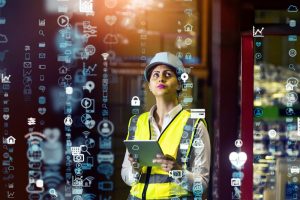When compared to workers in other occupations, construction workers are three times more likely to be killed and twice as likely to be injured. That means during a 45-year career, a construction worker has a more than 50% risk of experiencing a disabling injury and a 1-in-2,000 chance of being fatally injured on the job. Adding to these sobering statistics is the reality that construction injuries cost nearly twice as much when compared with other industries.
Since safety is the top priority of every jobsite, over the past decade, several technological innovations have been introduced to boost safety, mitigate risks, and streamline construction business operations including equipment, and assets. These technologies include:
- Reality capture: Autonomous laser scanners to accurately map site conditions from above ground, underground, and all areas in between enable project managers to get information about hard-to-access areas, minimizing risks to workers. This data is essential for planning and identifying potential hazards.
- Wearable devices and sensors: To improve situational awareness and prevent accidents,wearable tags, sensors, radars, and cameras alert workers and equipment operators to potential dangers on the jobsite.
- Augmented reality (AR) and artificial intelligence (AI): These technologies further elevate safety through improved awareness and shared learnings.
- Data collection and analysis: The data collected from wearable devices and sensors can identify unreported near-misses and hazardous areas.Analyzing this data allows managers to improve safety procedures and develop effective risk management strategies.
Combining different technologies such as sensors and cameras can enhance detection capabilities and boost safety. This is different from the traditional path where safety systems are either sensor- or camera based. By combining these technologies, with sensors calculating the distance while cameras improve visibility, especially in low-light conditions, detection capabilities can be greatly enhanced. This is particularly useful in dangerous situations such as deep excavations where visibility is significantly lowered. You can imagine a sensor being mounted to an excavator so that when the machine is digging, any persons in the excavation site are visible to the operator.
Using data to create a safety culture
While construction workers benefit from newer technologies to improve safety on the jobsite, everybody in the company benefits from having insightful, accurate data derived from sensors, radars, cameras, AI, and AR. With accurate positioning and measurement of sites, capturing relevant data starts early and continues throughout the project life cycle. The right distances and volumes are essential for construction safety as the information will define operations through the design model.
For example, reality capture technologies can scan in the air, below ground, and everywhere in between. The data enables the creation of a realistic and accurate digital replication of actual site conditions. This helps identify and address potential risks before workers go onsite, especially in places that are difficult or unsafe for humans to access.
Another example: Collecting data generated by wearable tags and machine-mounted equipment provides insights into the incidents that go unreported, providing additional opportunities to elevate safety plans and improve safety culture. Alternatively, companies may want to encourage proactive sharing of details about near-misses. This information offers key insights for safety planners to put more effective risk management strategies in place. Additionally, when near misses are reported by workers without fear of retaliation, it creates an opportunity for sharing lessons learned, creating new protocols, and lowering risks across the company.
Further, getting aggregate safety and jobsite data provides a valuable snapshot into work behaviors. This can include heat maps from incident reports, or knowledge of where the largest concentration of alarms is occurring on a site. In turn, this data prompts procedural changes, all of which can help companies evaluate and improve safety procedures.
Looking to the future of safety
Companies are already using AR as part of their safety strategy. For example, by enabling operators to “see through” machines, they can avoid collisions or running over objects. AI has the potential to advance autonomous technology solutions with autonomous driving of equipment.
It even goes beyond physical safety. Providing peace of mind addresses the psychological aspect of workers’ well-being, fostering a positive work environment and promoting a sense of security and confidence in their daily tasks.
Safety is the top priority for any construction project, and understanding the cause of hazards is key to adopting the right solutions and reducing risk. The use of technology to both protect workers immediately and capture valuable data to improve risk management planning for the future is crucial for any construction company to reduce safety risks.
Jason Hood is Building Construction Industry Manager for Leica Geosystems.

